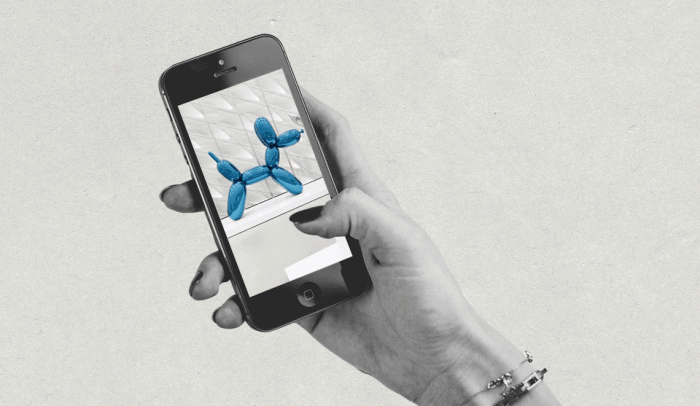Whether they were ready or not, this year marketers across all industries had to get comfortable with digital experience creation. A number of these experiences hit the mark—providing clear, helpful, easy-to-digest content to relevant audiences—but many were lacking in a few key areas. We wanted to find out what set them apart, so we met with a few prominent marketers (and Ceros clients) to learn more about their hallmarks for a great digital experience. Here’s what the effective pieces had in common.
It was created with purpose
A scattered experience without a centralized purpose isn’t one created with the audience in mind. You have a goal for the experience, and the facets of your experience—every one of them—point towards that same goal. Once you’ve identified that audience, cater every aspect of the experience to it. It’s better to be hyper-relevant to a core group of people than vaguely relevant to everyone.
“A brand’s IRL and digital experiences can feel disjointed when the experiences aren’t tied to an overarching brand objective,” said Kristin Benson, vice president of global entertainment at Getty Images. “Especially in today’s niche world, brands are rewarded when they are laser-focused and loyal to their driving objectives and core audiences. In other words, don’t try to create an experience that’s everything to everyone!”
Benson recommends applying the same attention to detail for a digital experience as you might have when you host a dinner party. Because it’s not just about the main course—you have to nail the lighting, the music, the hors d’oeuvres, the cocktails. Same goes for a digital experience.
“Even though it’s virtual, consider where your audience will experience this content and the journey they’ll take to get to your main message,” Benson said. “Attention to detail—even attention for simple things like consistent formatting or paragraph spacing—goes a long way.”
It’s empathetic and connects on a human level
Never forget that you’re a human creating something for other humans, so don’t overthink this. Craft something empathetic, that appeals to each viewer’s humanity. Digital content loses that piece far too often, but it’s one of the most important pieces to consider. Brands can educate and be thought leaders, but they can also make it clear that behind the brand is a group of humans, just like those on the other side of the interaction.
“The world has quickly transitioned to a digital-over-everything mindset,” said Mark Kilens, VP of content and community at Drift. “It’s crucial to create digital content that educates, and is sometimes humorous and entertaining in an appropriate way, while also expressing empathy and compassion to the time and the experiences people are going through.”
The world we live in now, Kilens says, is especially appropriate for empathetic brand content. He recommends making sure your storefront and website are in a position to engage with people, especially since most of your website is valuable content and information.
“At the end of the day, you should focus on making it as easy as possible to find something, get an answer, and get in touch with you,” he said.
It solves for the customer
When things get crazy and plans start changing, don’t lose sight of the initial goal—that why. When it comes to bringing experiential marketing online, those in the industry are so quick to think about how to translate something to digital, that why someone might want to engage with that campaign is often overlooked. Once you have a good reason for creating this digital experience, and you’re sure that it solves for the customer, be intentional about representing that in every stage of your experience.
“Putting the customer first starts by taking the time to deeply and fully understand what defines value for your audience at any given point in their lifecycle with your company,” said Juliana Nicholson, senior program manager at HubSpot. “It’s your job to then translate that need into more specific programming that maps to each unique stage. It’s important to remember that while your customer’s needs differ at each stage (education, support, community), the journey as a whole should feel like one cohesive brand experience.”
Digital transformations only work, Nicholson said, when the end-user experience mimics that of your original plan. As you go through the creative process, pause to ask yourself, does this still make sense? Is the impact on my customer the same as it was before? If so, charge ahead.
It’s focused on a specific audience
The experiences you create should be unmistakably yours, with your audience in mind throughout the process. Whatever that group looks like, it needs to make sense for them. While it’s untenable to create personalized content for every single one of your prospects, your experience shouldn’t be one-size-fits-all.
“As marketers, we understand the importance of personalizing each channel,” said Randy Frisch, CMO at Uberflip. “But let’s be honest—creating landing pages with content relevant to each prospect is exhausting and expensive. No one has unlimited resources.”
That’s why he recommends leveraging your existing content, but doing so carefully and thoughtfully so that the right people see the right things. That not only curates a tailored story for each prospect, but it encourages mass content consumption. “The more a prospect consumes your content, the more likely they are to buy,” Frisch says.
It’s well designed and built
When you think about a digital experience, the important part isn’t the “digital”—it’s the experience. Design isn’t just an afterthought that someone else takes care of once the copy is written. When you think about copy, about general purpose, about overall layout, it’s really important to recognize that your content needs to be well designed.
Someone is experiencing your content for the first time. If your design is overwhelming, confusing, or downright bad, they may not take that next step. If your content isn’t built for the device they’re using, loads slowly, or feels incomplete, good luck getting them to engage at all.
“As consumers, we want our products to be well crafted, aesthetically pleasing, and sturdy,” said Alex Kelly, director of digital marketing at Ceros. “We want the same things from our digital content, we just don’t think about it in the same sense. That hunger for good design and craftsmanship is there, so use it.”
So yes, the words and story matter—but, the design and packaging of your content signals to the other person how they should feel about it and what actions they should take.
Be intentional, empathetic, and creative
Ultimately, creating a truly compelling digital experience comes down to thinking thoughtfully about your audience in different two ways—as a fellow human being engaging with content on the Internet, and as a potential buyer of your offering engaging with your brand. Be consistent, address business concerns, and ensure that the experience is relevant to those viewing it—but don’t be afraid to express some personality.
If you can check those boxes, you’re well on your way.



